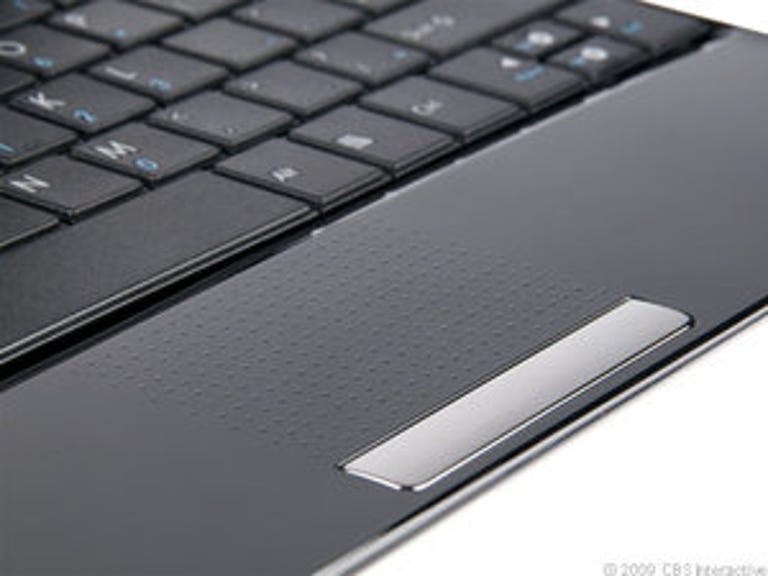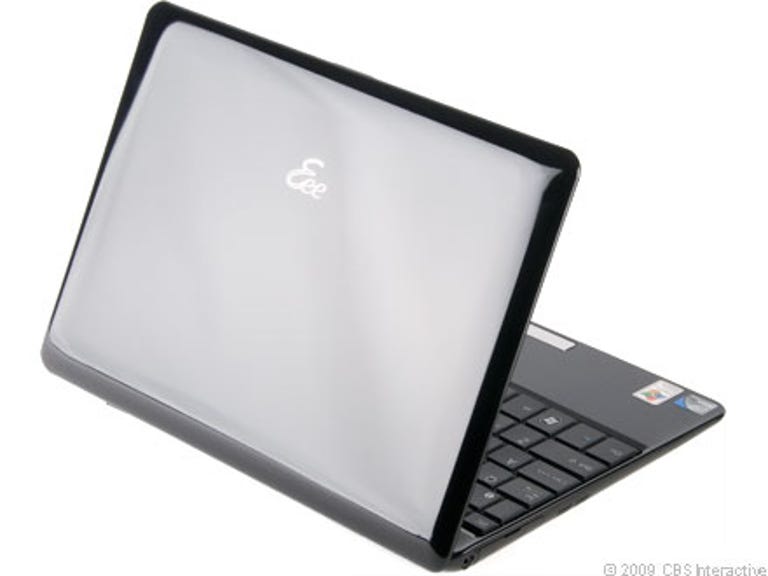 Why You Can Trust CNET
Why You Can Trust CNET Eee PC 1008HA Seashell review: Eee PC 1008HA Seashell
Such is the beauty of the Eee PC 1008HA Seashell that it makes other netbooks look like they were cobbled together by blind goat herders. One of the thinnest and lightest netbooks on the market, it also boasts a truly excellent keyboard. We wish the battery was user-replaceable though
Asus' Eee PC 1008HA Seashell (not to be confused with the Eee PC 1000HE) is a small, light and sexy device aimed at the fashion-conscious netbook fan who puts portability slightly above performance. It's available to buy now for around £375.
The Good
The Bad
The Bottom Line
Design
Let's get one thing out of the way. The Seashell doesn't look anything like a mollusc -- not even remotely. It's shiny, we'll give you that, but, if anyone can find one bit of this netbook that looks even remotely like a seashell, we'll give them a tenner and recommend them for membership in the Marine Conservation Society.
One thing that's definitely not up for debate is that the machine's styling is beautiful. We love absolutely everything about this device. The glossy black finish, the gently tapering lid, and the wedge-shaped profile all contribute to an overall design that's more aesthetically pleasing than that of rival netbooks. We're not sure whether it's quite as gorgeous as the Eee PC S101, but it makes most other netbooks look like they were cobbled together by blind goat herders.

The Seashell is one of the thinnest and lightest netbooks on the market. It's a mere 26mm at its thickest point and tips the scales at just 1.1kg. That might not sound much lighter than the 1.4kg 1000HE, but the difference is significant when carrying the Seashell over the course of an entire day. It's simply easier to manage than other 10-inch machines.
Because it's so svelte, Asus has had to make some sacrifices with the machine's connectivity -- the Seashell has just two USB ports, instead of the three we'd expect from this sort of device. Also, in an attempt to maintain the sleek lines, all its ports are recessed slightly and hidden behind flaps. This makes them slightly trickier to access, and some larger USB keys simply won't fit without an extension cable.
Behind other flaps are mic, headphone, Ethernet and mini VGA ports. That last one means Asus has had to 'do an Apple' and use a mini VGA to VGA adaptor. Rather than leaving the user to carry the dongle around in a pocket or bag, however, Asus has rather thoughtfully provided a dedicated slot underneath the chassis, via which the dongle is magnetically secured. That reduces the chances of it going missing.
Asus has done an Apple in other ways, too. The Seashell doesn't have a user-replaceable battery. It uses a lithium-polymer battery pack, which has the advantage of being cheaper to manufacture and more resilient to physical damage. Crucially, such a battery pack can also be moulded into just about any shape. That last fact plays a big part in the Seashell's thinness.
Asus has plenty of experience in creating netbook keyboards, and it shows. The Seashell has one of the best keyboards we've tested on any device of this size. It's 92 per cent the size of a full-sized keyboard, but the travel and spring are perfectly implemented, so it's actually more comfortable and accurate to use than many full-sized laptop keyboards. The dimpled mouse trackpad is also a joy to use, as are the rocker-style selector buttons.
Features
The main component inside the Seashell is an Intel Atom N280 CPU clocked at 1.67GHz. This is theoretically quicker than the Atom N270 seen in most netbooks, thanks to its faster front-side bus (667MHz compared to 533MHz).
According to Asus, the N280 reduces Windows XP's boot-up time by 8 seconds, and can open Microsoft Office files 2 seconds faster than the N270. The Seashell also has 1GB of RAM, which is pretty standard for a machine of this type.
Storage comes in the form of a 160GB hard drive. Again, this is par for the netbook course, but it's an ample amount for a machine primarily designed for use on the go. It provides enough space to hoard around 230 standard-definition movies. Should this prove insufficient, Asus provides an extra 10GB of online storage, accessible from any location via the Internet.
The Seashell's wireless capabilities are slightly above average. Its wireless adaptor is compatible with 802.11g Wi-Fi networks, which have a theoretical throughput of up to 54Mbps, but it also supports high-speed 802.11n networks for those who want faster wireless access and a longer wireless range. Up to 300Mbps is possible, although real-world speeds are likely to be closer to 100Mbps. The netbook also packs 10/100Mbps Ethernet and Bluetooth 2.1+EDR.
The Seashell's 10-inch, 1,024x600-pixel display is one of the best we've seen on a netbook. Its horizontal viewing angle is wide enough for two users to watch a video side by side, and its contrast brightness and colour reproduction seem instantly more impressive than many of its rivals. The perception of improved contrast is partly down to the fact that the Seashell uses a glossy screen coating. It's worth noting that this reduces the machine's usability in areas where lighting isn't perfectly diffuse. If you intend to use your netbook outdoors, the Seashell probably isn't for you.
Performance
The Seashell performs almost identically to the 1000HE. Its N280 CPU helped it to claw its way to a score of 1,530 in the PCMark05 benchmark test, which indicates it's fine for the sort of tasks a user might perform while away from their primary machine. Web browsing, basic image editing, instant messaging and office-productivity chores are all within its capabilities.
Asus claims the Seashell will get around 6 hours of life from its three-cell, 2,900mAh lithium-polymer battery. In Battery Eater's intensive Classic test, which runs the machine at full speed until it's exhausted, the Seashell lasted 3 hours and 7 minutes. Longer life is possible with less intensive use, but, if battery life is crucial, the 1000HE, which lasted 5 hours and 48 minutes in the same test, is a better bet.
Conclusion
The Eee PC 1008HA Seashell is a stunning netbook. It's very comfortable to use, extremely light and portable, and is a good all-round performer. For us, the Eee PC 1000HE's superior battery life makes it the better machine, but the Seashell holds its own in what is an increasingly competitive netbook market.
Edited by Charles Kloet
